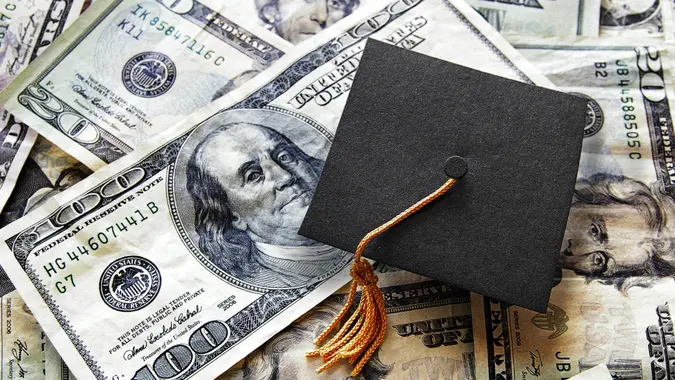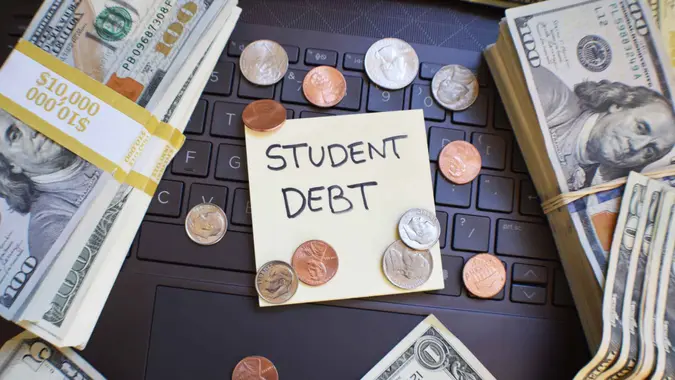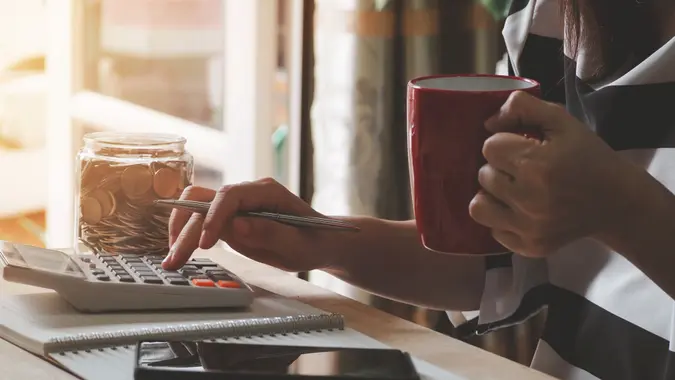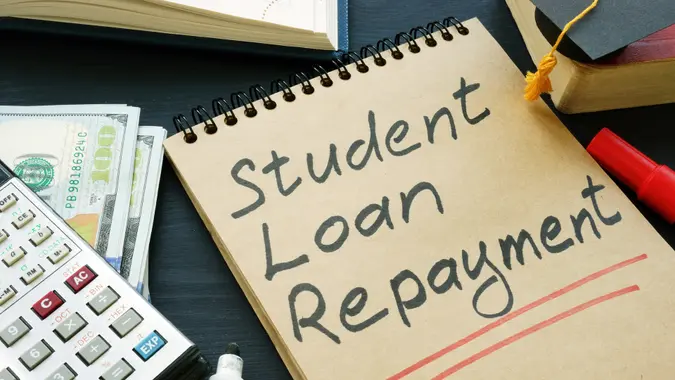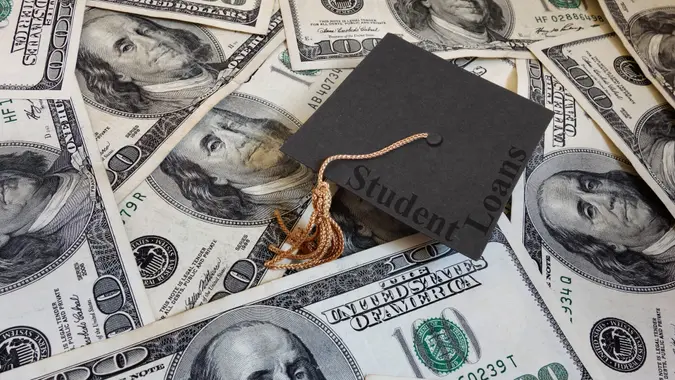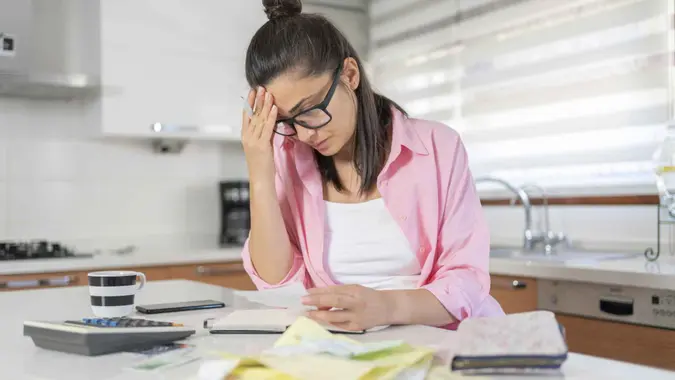5 Things To Do Once You’re Free of Student Loan Debt

Commitment to Our Readers
GOBankingRates' editorial team is committed to bringing you unbiased reviews and information. We use data-driven methodologies to evaluate financial products and services - our reviews and ratings are not influenced by advertisers. You can read more about our editorial guidelines and our products and services review methodology.

20 Years
Helping You Live Richer

Reviewed
by Experts

Trusted by
Millions of Readers
Americans put a high value on a college education and are willing to go deep in debt to obtain one. Roughly 43 million borrowers have a combined student loan debt load of $1.75 trillion, according to the latest estimates from the Education Data Initiative. The average federal student loan debt balance is nearly $38,000, while the total average balance — including private loans — exceeds $40,000.
Read More: Experts Say To Do These 5 Things for Your Student Loans During Election Year
Find Out: Do Your Student Loans Affect Your Credit?
This much debt can put you in a financial hole for years or even decades. When you finally pay it all down, it’s time to celebrate — and start taking steps to bolster your finances in other areas.
Here are five things to do once you are free of student loan debt.
Update Your Budget
Now that you have one less bill to pay, it’s time to toss away your old budget and create a new one. Your first step will be to wipe the student loan payment off the ledger. For the typical borrower, this means an additional $500 a month to put toward something else.
Bolster Emergency Savings
If you don’t already have an emergency savings account — or haven’t built it up enough — make this a priority after paying off your student debt. The rule of thumb is to build an emergency fund that can cover three to six months’ worth of household expenses. The idea is to create a financial safety net in the event of a sudden job loss or large, unexpected expense.
For example, if you spend $3,000 a month on essentials like housing, utilities, groceries and transportation, aim to have at least $9,000 in your emergency fund and ideally $18,000 or more. Put the money into a high-yield savings account to build your fund more quickly.
Pay Down Other Debt
Freeing yourself from student loan debt gives you the perfect opportunity to start tackling other debt — especially high-interest credit card debt. Use at least part of the extra money to pay more per month toward your credit card bills. Your goal is to bring the balance to zero and then pay future balances in full each month to avoid interest charges.
You can also try to get ahead on other debt such as mortgage or car payments by paying more each month. Just make sure your lender applies the extra payments directly to your loan principal rather than to any additional interest that has accrued since your last payment.
Build Up Other Savings
If you already have a sufficient emergency fund and your debt is under control, use the extra money to build up savings in other areas. For example, if you are behind on your retirement savings, now’s a good time to bring it up to where it should be. You can also use the extra money to build savings for important purchases such as a new home or put it toward your kids’ education.
Fix What Needs Fixing
Many student loan borrowers have to forego needed home repairs or upgrades until they finally pay the loans off. If you fall into that category, now’s the time to take care of projects you’ve been putting off. Focus on the most important items first, like old appliances that need replacing or HVAC systems that no longer keep your home sufficiently cool or warm. After that, you can tackle paint jobs or renovations that can give your home a fresher look and increase its value.
 Written by
Written by  Edited by
Edited by 




